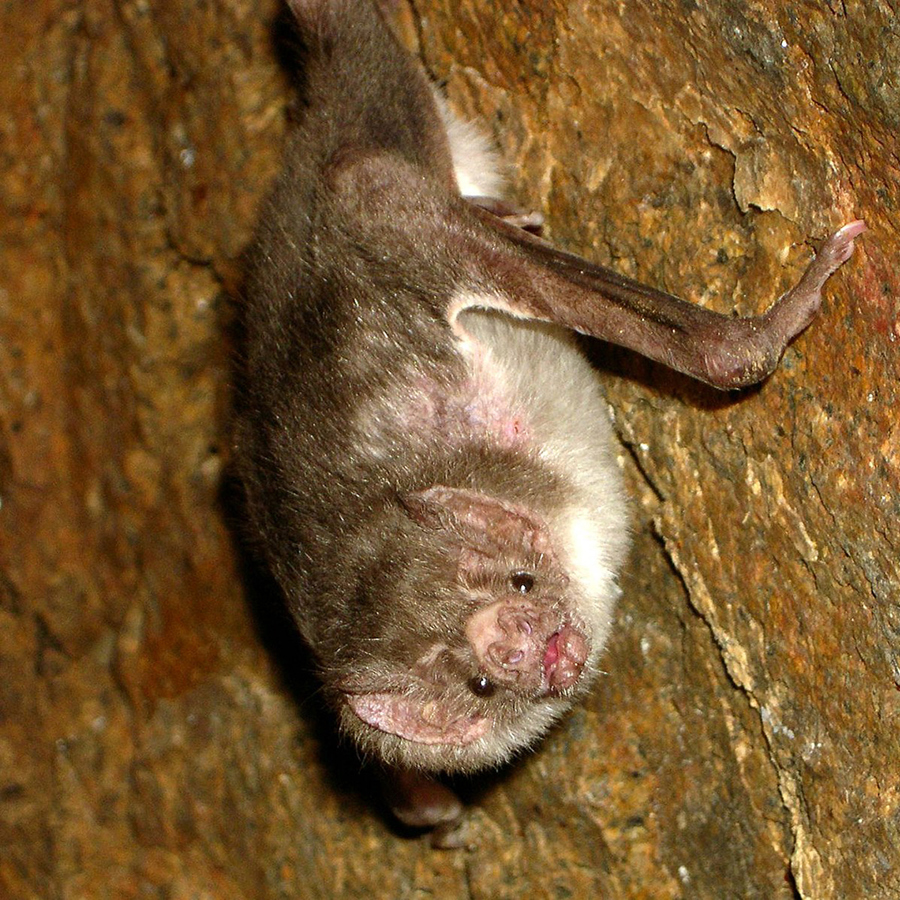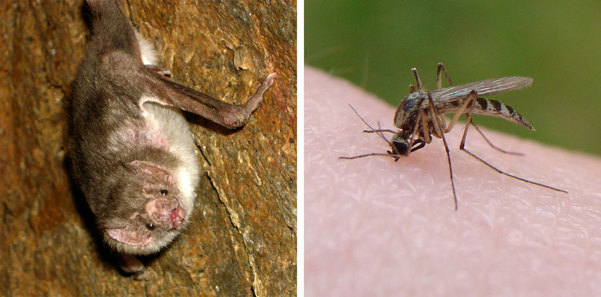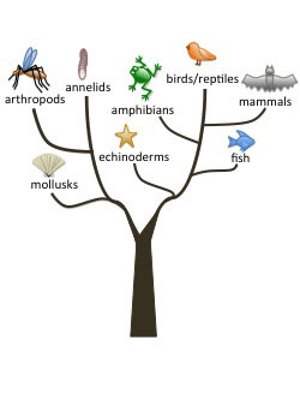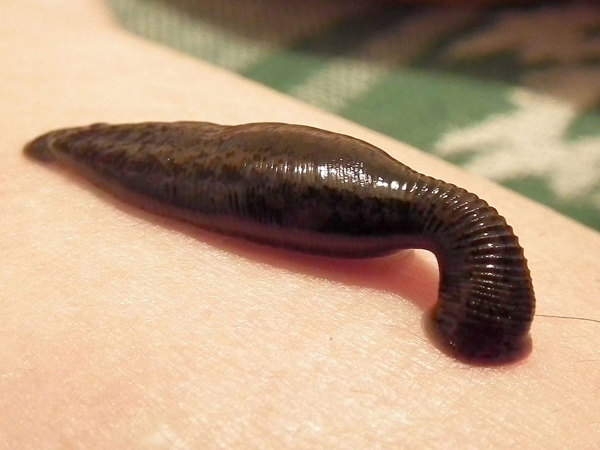
Do leeches, vampire bats, and mosquitoes share some DNA that lets them consume blood?
December 13, 2011

- Related Topics:
- Evolution,
- Comparing species,
- Animal biology,
- Editor's choice
A curious adult from North Carolina asks:
“Since a leech, a vampire bat, and a mosquito all consume blood from mammals, is it accurate to say that some part of each of these animals DNA is exactly alike? And further that all other creatures that do not consume blood do not have this same genetic trait in their DNA?”
Nope, neither is true. Just because two animals do similar things, it doesn't mean they have the same DNA.
If we think about it a bit, this makes sense. Genes have the instructions for making every part of an animal. And the parts of a mosquito, leech and bat that suck blood look nothing alike.
For example, a vampire bat uses its sharp front teeth to bite through skin. A mosquito has something called a proboscis that looks like a long, pointy straw on its face that it uses to suck the blood right out of an animal. The DNA instructions for making teeth must be pretty different than the ones for making a proboscis!
It's like how you and I both use the internet, but we may not do it using exactly the same tools. You might use a PC desktop and I could use my iPhone and we might even use different web browsers. In the end, though, we can both use those tools to google pictures of vampire bats. We got the same results but with different "DNA."
When two different types of animals do the same thing but use totally different tools it's called “convergent evolution.” And it is pretty common.
Convergent evolution is why bats and mosquitoes can both fly but their wings are so different. And why we can swim through water using our arms and legs, but a leech swims around by wriggling its whole body like an eel. And so on.
What I thought I'd do for the rest of the answer is focus on why bats and mosquitoes ended up doing the same thing using different DNA. As you'll see, it has to do with the fact that we can only build on what we have. Nature can't take the DNA from a mosquito and add it to a bat to get a proboscis.

Building on What You Got
We all came from a single ancestor. So if we go back far enough in time, we all shared the same DNA.
As we split into different species, though, we could no longer easily share DNA. So human DNA stays mostly in humans. And bat DNA mostly in bats.
This means that a bat can't take DNA from a mosquito to grow a straw out of its face. Bats (and every other living thing) get their DNA from their parents who got it from their parents who got it from their parents and so on.
This means bats can really only build on what they have - they can't simply turn their face into a straw.

Here's how scientists think vampire bats might have evolved (or at least their teeth).
The ancestors of vampire bats didn't actually eat blood, they ate insects. Some of them ate these insects off of other animals.
Sometimes when they'd get an insect, they'd bite the animal it was on too. This bat would now have an extra source of protein.
Having some extra food would be a great thing for the bat. It could go longer between meals and not worry about finding as many bugs to eat. If only they had a way to bite into the animal all the time.
The bats with the biggest sharpest teeth did the best job at getting blood from animals. Over time, they had more kids until eventually vampire bats were born.
This is way easier (and thus way more likely) than a bat growing a straw out of its face. To make a straw, the bat would have to create the genes needed to make a beak that could stab into an animal. And because of how new genes happen, this is exceedingly unlikely.
New genes do sometimes appear, but they are usually built off of old ones. Occasionally a brand new one will appear, but making something like a proboscis takes lots of genes. This means it is really unlikely that a set of mammalian genes would appear that would somehow work together to become a straw. Which is why these bats have big teeth instead of a straw.
Now if we were all still one big happy species, the mosquito could kindly donate the appropriate genes to the bat. But we aren't so this is not going to happen.
In fact, scientists couldn't even make it happen in the lab. We do not have the skills needed to add mosquito genes to a bat to make a straw faced bat. Neither does nature.
There's More Than One Way To Sink Your Teeth Into It...
A leech also uses teeth to bite through skin. After reading the previous section, this might make you think that since a bat also uses teeth they must share the same blood-sucking DNA as leeches. But they don't. They have very different DNA.
Leeches suck blood using hundreds of tiny razor-sharp teeth that saw through skin. Even though vampire bats also use teeth, the genes they have to make the teeth come from very different ancestors.

The great grandparent of the leech was something that looked like a worm. That's pretty different from a bat.
So the genes that make the leech's teeth are different from the genes that make the vampire bat's teeth just like a leech's ancestor is very different than a bat's ancestor. In the end, DNA comes down to who your great, great grandparents were not what kind of food you like to eat.

Author: Elizabeth Tanner
When this answer was published in 2011, Elizabeth was a Ph.D. candidate in the Department of Genetics, studying preventing drug-resistance in viruses in Karla Kirkegaard’s laboratory. She wrote this answer while participating in the Stanford at The Tech program.
 Skip Navigation
Skip Navigation
